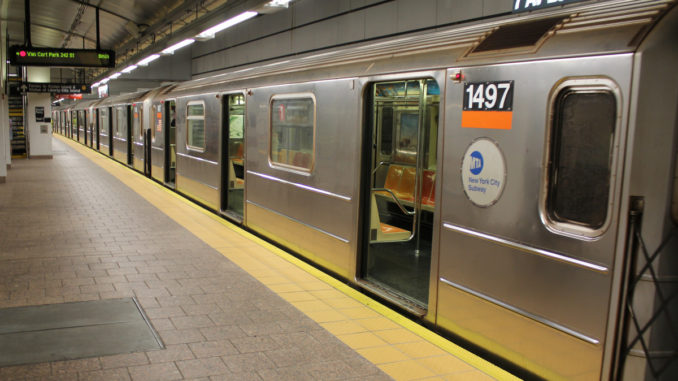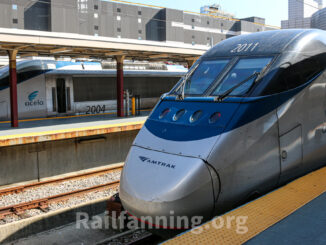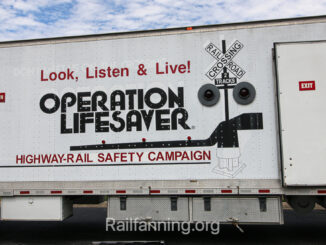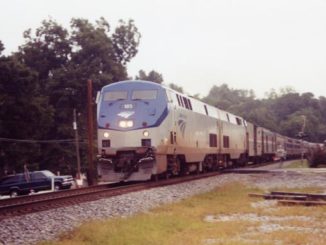
(The Center Square) – Calling Sunday night’s breakdown unprecedented and unacceptable, New York Gov. Kathy Hochul pledged to New York City subway users to find out what caused the chain reaction of events that led to more than 80 trains being knocked out of service for more than four hours.
Speaking with reporters Monday morning outside a subway station, Hochul said Consolidated Edison reported a momentary outage on Sunday night at about 8:20 p.m. ET. That outage triggered the backup system to start. However, as the system tried to return to normal, she said a surge led to the Metropolitan Transportation Authority losing the ability to signal to or communicate with half the system.
“Last night was unacceptable,” she said. “If you’re one of those riders or people relying on safe transport, the system failed you. The MTA is the lifeblood of the city, and a disruption of this magnitude can be catastrophic.”
In two cases, trains stopped between stations, and MTA personnel along with emergency responders coordinated evacuations in the tunnels for those passengers.
However, in two other instances where trains were between stops, passengers performed what the governor called a “self-evacuation,” where they entered the tunnels on their own. That extended the time it took to fully restore the system by about 90 minutes as New York City firefighters checked the tracks.
“What we experienced was a lot of anxiety for the citizens of the city who happened to be on the trains, and on the five trains in particular that were between the stations over 550 people were affected,” Hochul said, noting the fifth train was re-platformed. “Again, this is a scary situation, something we don’t want New Yorkers to ever have to experience again.”
Full service resumed around 1:30 a.m., and the more crowded Monday morning commute was moving, as usual, she added.
“I do believe people should feel comfortable, safe, and secure going to work this morning. And we welcomed them back,” the governor said.
Still, Hochul called for an immediate review to determine what caused the massive disruption. She was joined at the Monday briefing by MTA acting Chair and CEO Janno Lieber and Demetrius Crichlow, the senior vice president for subways.
She added that she thanked them for their work through the night to get the system back up to normal and trusted them to conduct the investigation.
“We need to know why the system broke down and why there’s a breakdown of communications between the rail center, the rail control center and the trains,” the governor said. “I would also be clear that we’ve had no indication of any malicious actions that would, that would have created the situation, and that’s why I want to find out exactly what happened to prevent it from happening again.”
The incident occurred just four days after state Comptroller Thomas DiNapoli released an audit showing MTA’s Metro-North passenger rail service did not have documented proof that procedures for unexpected or unplanned events were followed in 38 of the 80 cases it reviewed.
In addition, the audit found 26 of the 80 cases should have triggered a call to activate or place on standby its Emergency Management Task Force. Yet, the review found that task force was only contacted one time in all those cases.
Within the past month, the state agency that oversees mass transit and passenger rail in the New York City area has undergone a significant change in leadership. Lieber replaced Patrick Foye as interim president and CEO of Empire State Development, the state’s umbrella economic development arm.
However, before he resigned, Gov. Andrew Cuomo sought to appoint Sarah Feinberg as the authority’s first chairwoman. Feinberg, who stepped down last month as the interim president of MTA’s New York City Transit, previously served as the administrator for the Federal Railroad Administration.
To do that, though, Cuomo needed the state Legislature to pass a law allowing the chair and chief executive positions to be split. A deal had been in place, but lawmakers did not pass it before the session ended in June. They also did not have a chance to come back for a special session before the former governor stepped down last week in light of numerous sexual harassment allegations.
That arrangement may not carry forward into the Hochul administration. Last Thursday, the new governor said on Spectrum News NY1 Inside City Hall and in a news conference that how she will handle appointments to the MTA and other state agencies will differ from Cuomo.
“The MTA is going to be far more liberated, and I will not be filling positions with political allies, because there’s a lot of talent out there, and I want a diverse population, representing the riders, which is a diverse population. It makes sense for me to be doing that,” she said on NY1.




